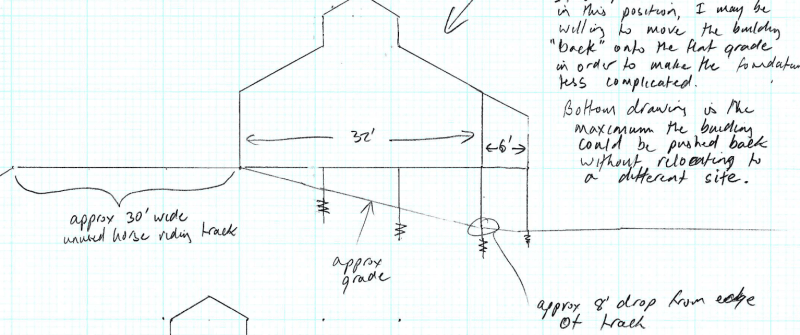TehMightyEngineer
Structural
- Aug 1, 2009
- 3,073
Just want to check on how the hive mind would handle this.
Designing a summer camp dormitory structure. The building will be elevated on screw piles and posts with the site sloping upward toward one side of the structure. See below:

My first thought was to design this as an open monoslope free roof with a roof angle of 0° per ASCE7-10 Fig 27.4-4; however, the sloping grade will clearly cause a different wind pressure than the open monoslope roof designs intend.
Next thought was I could design it as a partially enclosed structure but per the definitions at the start of chapter 26 with the 3 open sides I'm not sure whether I really fall under that category and not an open structure.
All things equal, partially enclosed seems like the more accurate and conservative method to me.
How would you consider wind on the bottom of this elevated building?
Ian Riley, PE, SE
Professional Engineer (ME, NH, VT, CT, MA, FL) Structural Engineer (IL, HI)
Designing a summer camp dormitory structure. The building will be elevated on screw piles and posts with the site sloping upward toward one side of the structure. See below:

My first thought was to design this as an open monoslope free roof with a roof angle of 0° per ASCE7-10 Fig 27.4-4; however, the sloping grade will clearly cause a different wind pressure than the open monoslope roof designs intend.
Next thought was I could design it as a partially enclosed structure but per the definitions at the start of chapter 26 with the 3 open sides I'm not sure whether I really fall under that category and not an open structure.
All things equal, partially enclosed seems like the more accurate and conservative method to me.
How would you consider wind on the bottom of this elevated building?
Ian Riley, PE, SE
Professional Engineer (ME, NH, VT, CT, MA, FL) Structural Engineer (IL, HI)


